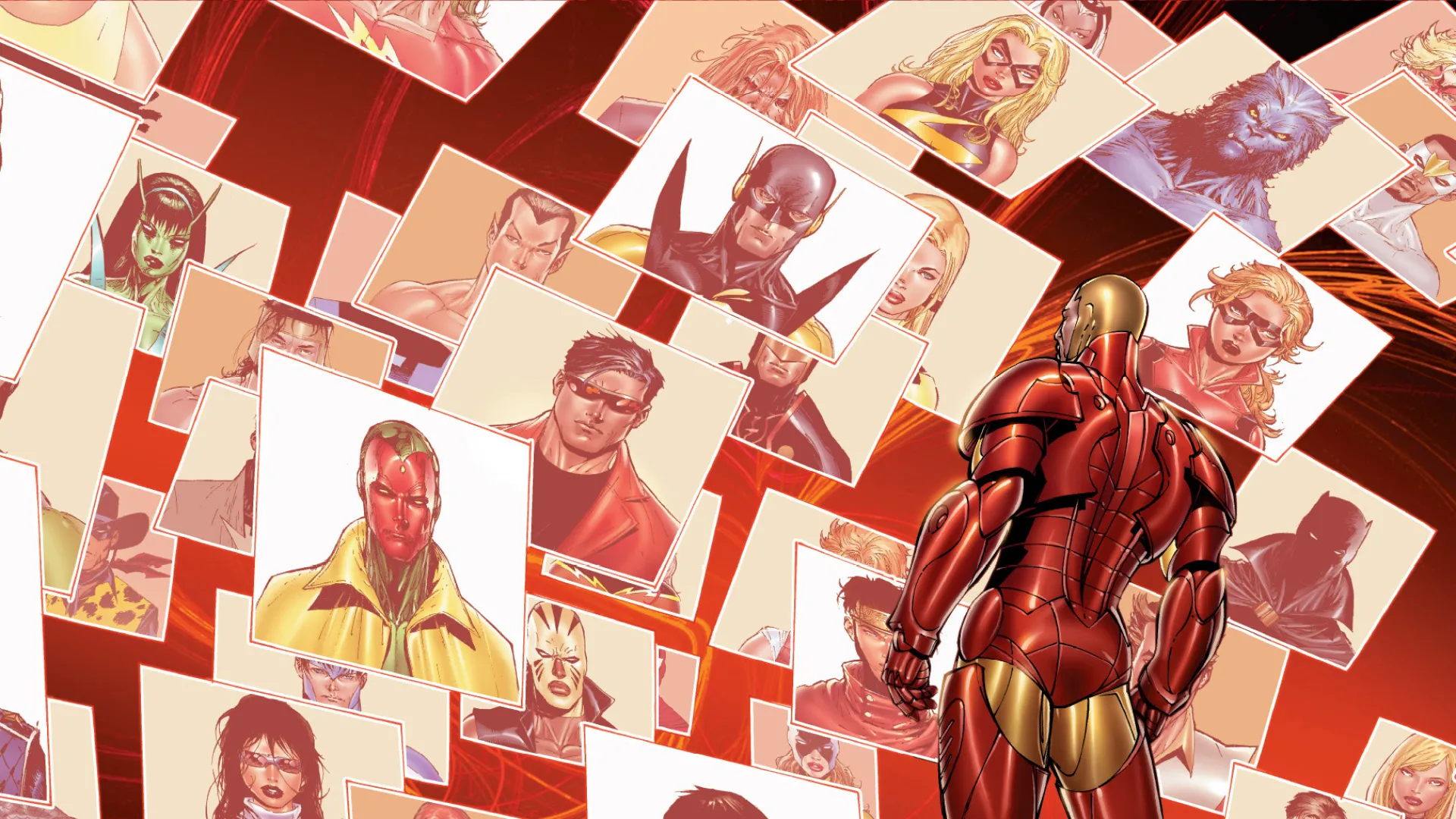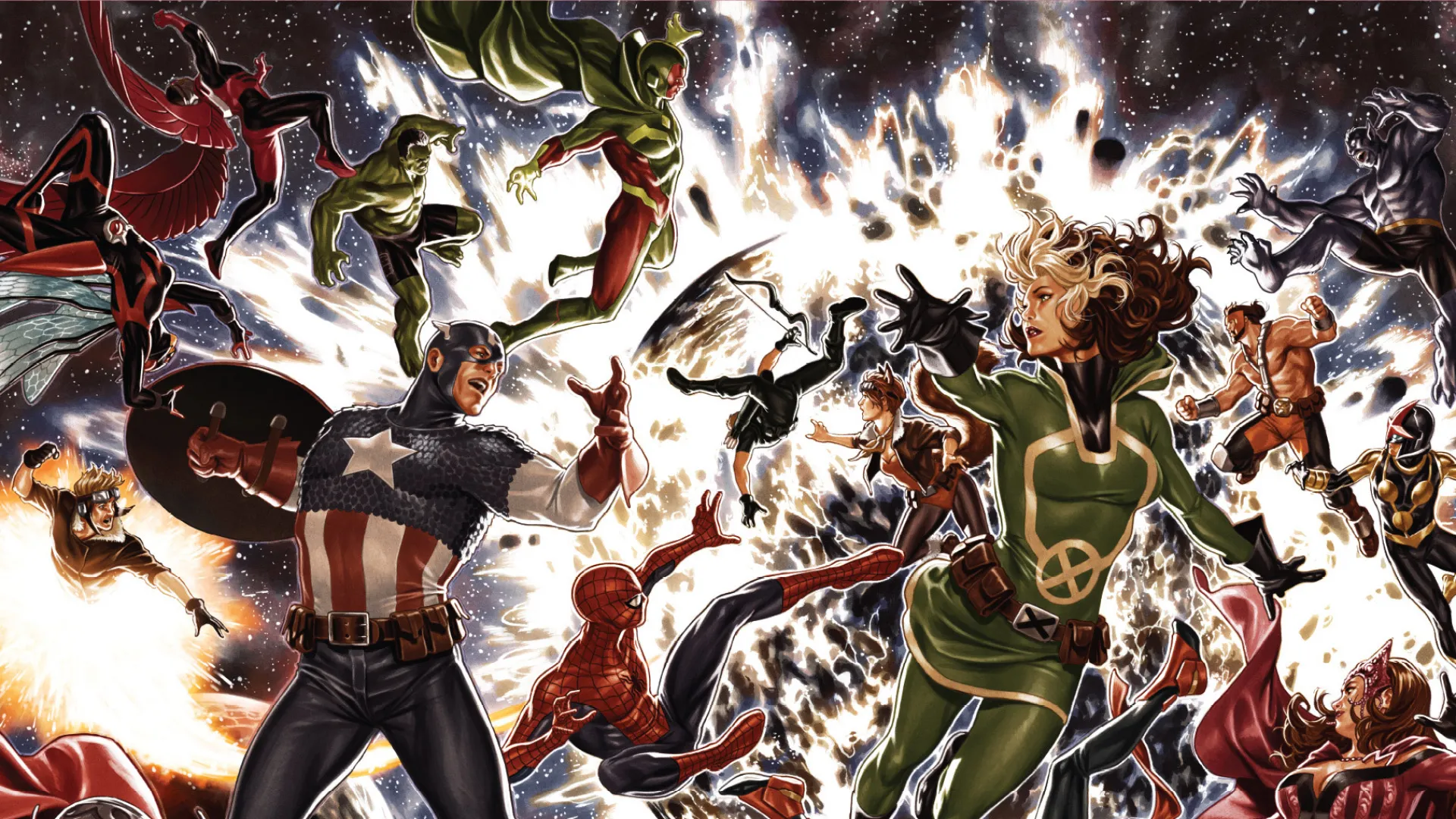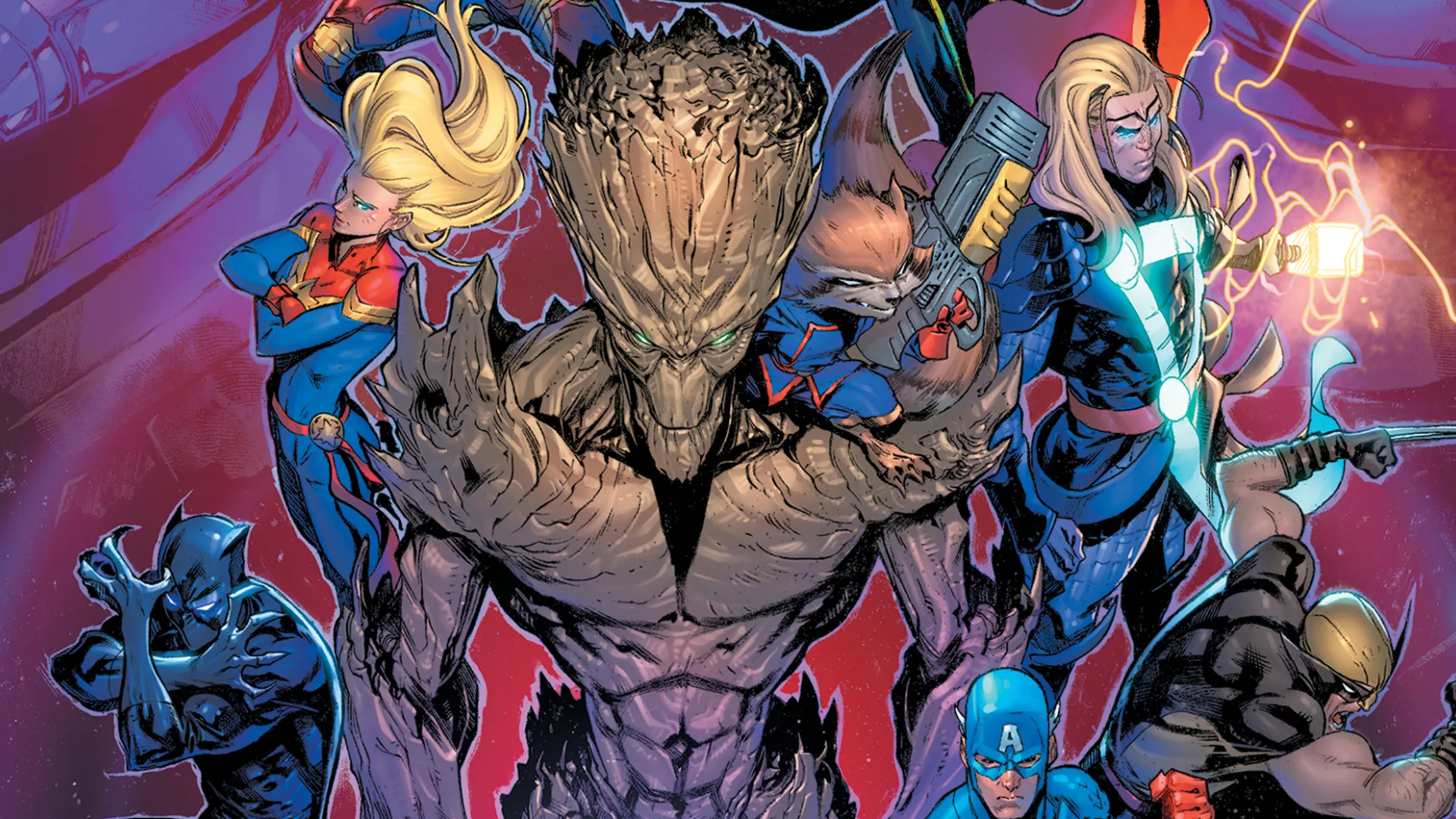Why do we enjoy superhero stories? This question kept nagging me while I read through an early preview of the Marvel Multiverse Role-Playing Game. Is it an aspirational fondness?
Do we study their fictional lives so that we might better model our own on their exploits? Or is it instead a devotional kind of admiration for a more perfect humanity? The new playtest document spends more than 120 pages scaffolding rules and minutiae for a system that ultimately feels like a third option: Reading comics in order to choose the best action figures for a display case. Its heroes feel posed, sterile and unmoving, while the game itself leans a bit too far into gimmicks and fan service.
This new game, written by New York Times best-selling author Matt Forbeck, who also designed the system alongside Mike Caps and John Nee, promises full access to the Marvel Comics universe. It’s far from the first attempt. The granddaddy of RPGs, TSR, began the tradition with 1984’s Marvel Super Heroes and followed it up with Marvel Super Heroes Adventure Game in 1998. Marvel took matters back into its own hands by directly publishing Marvel Universe Roleplaying Game in 2003, while Margaret Weis Productions managed to license Marvel Heroic Roleplaying in 2012.

Players can choose to embody one of their favourite superheroes, or they can create their own and align them with the Avengers, the Guardians of the Galaxy or any other organization. Image: Marvel Worldwide/Marvel Entertainment
Marvel Multiverse RPG’s predecessors took different tacks when translating the high-action and often pulpy nature of comic stories to the tabletop — in one case using a deck of cards instead of dice – but none managed to capture a long-running audience. Despite Marvel’s near chokehold on popular culture, Forbeck and his team have not been guaranteed success. The current RPG scene boasts plenty of systems facilitating caped crusaders — Masks: A New Generation or Sentinel Comics: The Roleplaying Game are two recent standouts — which have succeeded alongside dedicated communities keeping old workhorses such as Mutants and Masterminds thriving.
Marvel Multiverse RPG is a decidedly mainstream game, from its presentation to its mechanical bones. Anyone familiar with Dungeons & Dragons will immediately recognize the structure, a familiarity that feels intentional. Any game angling for mainstream success in this moment wants to appeal to the massive contingent of players hooked on 20-sided dice. One look at the information-dense character sheets, all tightly formatted boxes and lines, reveals who this game is attempting to court.
After a fairly solid introductory chapter that explains RPGs and how they’re played, the book starts making a lot of weird assumptions. A section on safety rules stresses the importance of a session zero to establish baseline expectations, but it fails to outline any specific tools players can use to enforce boundaries. There’s a lot of “players should feel free to express” talk that seems to leave the onus on individuals to voice discomfort, which runs against the whole point of modern safety tools.
Game masters, called Narrators in this system, will feel equally left out because the playtest rulebook explicitly hopes they are “a seasoned role-player who has rolled lots of dice before.” One short, introductory adventure is included, and it’s more of a glorified combat tutorial. Crafting any scenarios beyond that will be done sans guidance from the rules, tips on creating enemies and their stat blocks, or much of anything else. Future versions will hopefully grant resources to aspiring Narrators and expand the roster of punchable baddies beyond a couple of Hydra grunts.
One of the more advertised mechanics in Marvel Multiverse RPG is the d616 system, a cheeky reference to the comics’ setting on Earth-616. Players roll three six-sided dice anytime an action flirts with danger or conflict, checking the results against a target number to determine success or failure. The differently-colored Marvel Die grants access to “fantastic” results and other bonuses when it lands on the Marvel brand’s logo, which replaces the one-pip face. That resulting one also counts as a six, except when the other two dice also show ones because that’s a dreaded botched roll. You don’t want a botched roll.

If you’re confused by what should be a fairly straightforward system, don’t feel bad. This eyebrow-wiggling nudge to fans comes at the cost of muddying the player’s one mechanical lever used for attacking, defending and accessing their superpowers. The beauty of critical hits and failures on the 20-sided die is the immediate clarity of the roll. It’s hard to build meaningful tension if players have to think about whether this collection of ones and other numbers is really good, really bad, or just a prompt to start doing math.To the game’s benefit, its rank system shows real promise. Ranks work exactly the same as character levels in traditional RPGs by gating access to advanced powers and traits until the squad puts some missions under their belts. They also pull a clever double duty by framing characters’ growth across an entire campaign. Players can choose to start anywhere on the rank ladder’s 25 rungs, establishing their heroes as fresh-faced newcomers or someone who has crushed a Sentinel or two. The group can then set a growth ceiling and effectively limit the scope of their adventures to the single borough of Hell’s Kitchen or the furthest reaches of the universe. That limit can always be increased later, escalating the danger and bringing hinted threats to the story’s foreground.
The back half of the playtest document details an already impressive list of powers for souping up your supes. Grouped by origin, they create a progressive structure meant to be unlocked over time — this imitates a fledgling hero’s gradual mastery of their own abilities and acumen. But the exercise feels a bit hypothetical since the currently available material barely sketches out the world these heroes are meant to protect. Players can create their own Avenger or Spider-Person, complete with an origin and backstory, but how does that inform their actions? There are rules explaining the damage threshold of walls, how strong someone must be to pick up various vehicles, and how much speed you lose each turn while gliding.
I’d love to see Marvel Multiverse RPG build the sort of toolbox that empowers players to craft their own Into the Spider-Verse, Logan, or Immortal Hulk — the kinds of stories that delve into a well-known mask searching for the person who wears it. Roleplay should be more than just re-enacting old stories with action figures. If superheroes truly inspire us to greater heights and better tomorrows, I hope this game gives its players the freedom to explore them in all their messy, aspirational depth.
Marvel Multiverse Role-Playing Game: Playtest Rulebook will be available at retail starting April 20.
Article plucked from:
https://www.polygon.com/23032071/marvel-multiverse-rpg-playtest-download-review

Be the first to comment on "The Marvel Multiverse game feels out of step with modern tabletop RPGs"